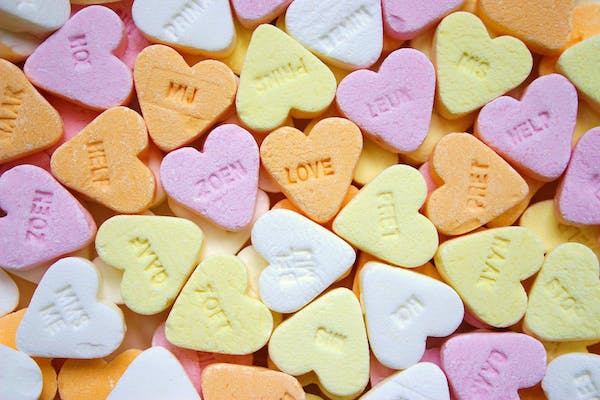Candies are very popular among children. It’s because most of the candies we can buy have different shapes, sizes, and as well as colors. They also have different tastes or flavors, such as chocolate, mint, sour, and more. Candies also come in different textures. There are soft candies, crunchy candies, hard candies, and chewy or gummy candies. While most children, and even adults are enjoying different kinds of candies, many do not like them because they are not healthy, and most contain a high amount of sugar. Also, find out how food dyes help improve the appearance of foods.
Some children are not allowed to eat candies, or maybe too much of them because their sweetness can ruin the teeth. For adults, eating lots of candies can lead to high levels of sugar or diabetes. But aside from those reasons, another issue is that candies in the United States contain ingredients that are not used or which are banned outside of the country. That sounds very alarming, right? But according to the Food and Drug Administration, they are doing their best to monitor food safety.
If you are wondering about these ingredients, you’re in the right place. Today, we are giving you a list of the US candy ingredients not used outside of the US.
Blue #1 Food Coloring
Blue #1 food coloring or also called Brilliant Blue, is banned in Norway, France, and Finland, but they can be found in candies in the United States like Jolly Rancher. It is also listed as one of the ingredients of Kellogg’s Nutrigrain bars.
Well, this food coloring was at one point banned in several European countries, but later on, the EU certified it as safe. Norway, on the other hand, band almost all food dyes from 1987 up to 2001. But Blue #1 food coloring is one of the oldest FDA-approved color additives. Meaning, it is generally considered nontoxic and safe for foods like candies.
Blue #2 Food Coloring
Blue #2 food coloring is one of the ingredients in Mars’ M&Ms. According to a statement from Mars, their products can have a slightly different formulation around the globe, which is based on both local requirements and consumer preferences. But they assured that all the colors they use in their candy products, no matter where they are sold, are safe.
Blue #2 food coloring was believed to be unsafe by other countries because of the studies done in the 1980s where rats were fed with foods containing Blue #2 food coloring over a long period in large concentrations. After that, gliomas or brain tumors were seen in the male rats, but no one was able to find a real-world connection after that.
Red #40 Food Coloring
Red #40 or Allura red, is a food coloring that is not recommended for children in the United Kingdom, but it is approved for use in the EU. According to the “Rich Food, Poor Food” book, this type of food coloring may contain p-Cresidine, which is a carcinogenic contaminant that is thought to cause tumors of the immune system.
In the United States, Red #40 can be found in candies such as cotton candies, and as well as in fruit cocktail, ice cream, and many other products. But there is no evidence for the risk of tumors due to this food coloring. In fact, it has been heavily studied by food and safety groups in North America and Europe, and it still remains in wide use. Unless you overeat candies in a day, then your diet will surely be disordered.
Yellow #5 Food Coloring
Yellow #5 or Tartrazine, is a synthetic lemon yellow azo dye that is banned in Norway and Austria because of the compounds benzidine and 4-aminobiphenyl. Based on the book, “Rich Foods, Poor Foods,” six out of eleven studies done on Yellow #5, showed that this ingredient cause genotoxicity, which is a weakening of the cell’s genetic material with the possibility to mutate healthy DNA.
This food coloring is widely used in candies such as gummy bears, Peeps marshmallow treats, and more. Companies in the United States are required to put Yellow #5 in their ingredients because some people are sensitive to it, most especially those who are asthmatics and those with aspirin intolerance. But there are still more people who are allergic to peanuts compared to those who are allergic to Yellow #5 food coloring.
Yellow #6 Food Coloring
This food coloring is banned in Norway and Finland, but it is approved across the EU. It is also called Sunset Yellow. It is used in candies, desserts, snacks, sauces, and preserved fruits. Aside from that, it is also often used in conjunction with amaranth, to produce a brown color in both caramel and chocolates.
In 2010, an EU regulation came into effect, and it mandated that food manufacturers include a label on foods that contain the Yellow #6 food coloring stating it may have an adverse effect on activity and attention in children. But in the United States, this food coloring is approved for use in coloring foods, drugs, and cosmetics.
These are some of the candy ingredients that are not used in other countries but are being used in the United States. Maybe other countries are just taking extra precautions when it comes to making candies and other foods. But based on studies, these ingredients are not proven to be harmful to people’s health. We all just need to be cautious of the foods we eat, and when it comes to sweets like candies, moderation is the key to prevent or avoid health issues.

